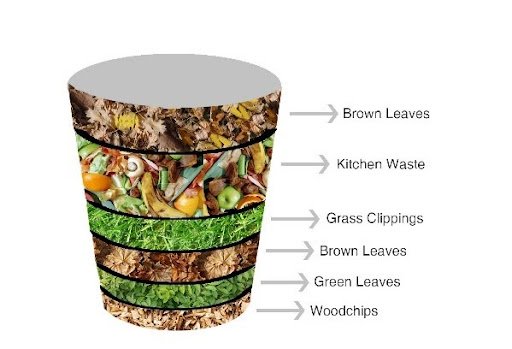AT HOME COMPOSTING
OUTDOOR COMPOSTING TIPS
SELECT a site in your yard away from garbage to reduce the chance of bear encounters.
LAYER your compost so that BROWNS are always added after GREENS, covering greens completely by a brown layer no more than 4 inches thick. Begin with a 3:1 brown to green ratio and tweak if necessary.
BROWNS (carbon rich) include:
Dead leaves, straw, wood chips, saw dust, shredded or cut up low quality paper (i.e. paper towels, newspaper, paper bags, toilet paper rolls, etc)
GREENS (nitrogen rich) include:
Raw fruit and vegetable scraps, coffee grounds, tea bags, fresh grass clippings and plant trimmings, animal manure (herbivore only; not dog or cat?
OTHER MATERIALS include:
Rinsed eggshells, fireplace ash (in moderation), human and animal hair
NEVER add meat, bones, fish, dairy products, grease or oil, grains, rice or pasta, processed or cooked food, compostable containers or cutlery, dog or cat manure
ADD OXYGEN to your pile by rotating or turning the contents every few weeks and then covering them with more browns. Aeration is necessary for decomposers to do their work in turning your food and yard scraps into compost. It will also reduce the chance of odors.
KEEP IT MOIST, like that of a wrung-out sponge. If too dry, it will take longer to decompose; if too wet, the contents may rot and begin to smell.
NOTE, no compost bin is bear-proof, but following these steps will reduce the chance of odors, thus minimizing the chance of a bear encounter. The only way to completely reduce this risk is to compost indoors. Vermiculture (worm composting) is a great indoor option!

